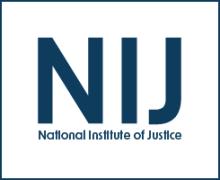Female
Acoustic Differential Extraction for Forensic Analysis of Sexual Assault Evidence
NCJ Number
308350
Journal
Analytical Chemistry
Date Published
July 2009
Agencies
NIJ-Sponsored
Publication Link
Receipt of Post-Rape Medical Care in a National Sample of Female Victims
NCJ Number
308349
Journal
American Journal of Preventive Medicine
Date Published
August 2012
Agencies
NIJ-Sponsored
Publication Link
Service Utilization and Help Seeking in a National Sample of Female Rape Victims
NCJ Number
308345
Journal
Psychiatric Services
Date Published
2015
Agencies
NIJ-Sponsored
Publication Link
Prevalence and correlates of service utilization and help seeking in a national college sample of female rape victims
NCJ Number
308344
Journal
Journal of Anxiety Disorders
Date Published
December 2010
Agencies
NIJ-Sponsored
Publication Link
A multisite examination of women veterans in veterans treatment courts: a gendered comparison of demography, criminal history, program requirements, and substance use and mental health issues
NCJ Number
308336
Journal
Journal of Offender Rehabilitation
Date Published
2024
Agencies
NIJ-Sponsored
Publication Link
Comparing Meters to Yards
NCJ Number
308245
Journal
Justice Quarterly
Date Published
2023
Agencies
OJJDP-Sponsored
Publication Link
Criminal offense charges in women: A 10-year follow-up of an RCT of treatment foster care Oregon
NCJ Number
308127
Journal
Journal of Consulting and Clincial Psychology
Date Published
2022
Agencies
NIJ-Sponsored
Publication Link
Criminal Orders of Protection for Survivors of Intimate Partner Violence, Future System Engagement, and Well-Being: Understanding the Importance of Prior Abusive Relationships
NCJ Number
308076
Journal
Victims & Offenders
Date Published
2023
Agencies
NIJ-Sponsored
Publication Link




